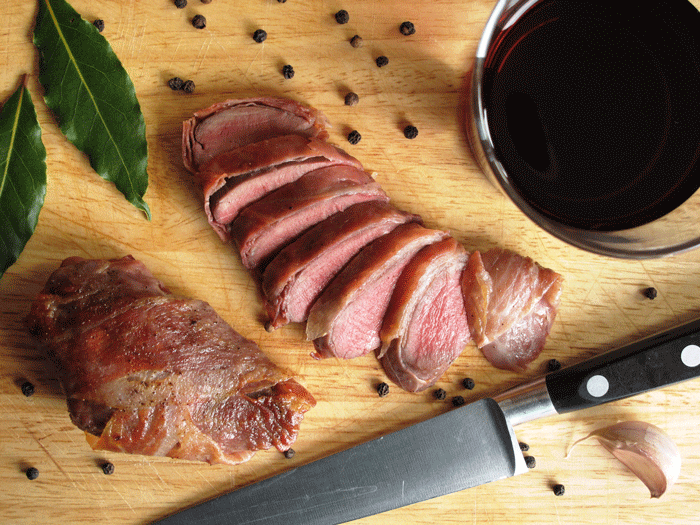Pairing wine with game birds
Author: Susie Carter
Feathered game tends to fall into two categories – the paler meat of partridge and pheasant and the darker meat of pigeon and mallard duck. While you might expect the wines you match with mallard to be interchangeable with farmed duck, the two are quite different. The mallard has a much stronger flavour than its domesticated cousin and can cope with a more intensely flavoured wine to accompany, though it’s also much lighter in texture, having worked off all that fat from a lifetime on the wing.
Both mallard and pigeon benefit from quick cooking and a pink centre to prevent the lean meat from toughening.
- Wrap 1 mallard breast or 2 pigeon breasts per person with prosciutto, securing with cocktail sticks.
- Sear on either side in a hot frying pan until nicely coloured, then finish off in the oven for 5 minutes at 180⁰C / gas 4.
- Leave to rest for 5 minutes before slicing.
Serve either with homemade skin-on chips and perhaps a grilled mushroom or two, or with shredded cabbage sautéed with garlic and plenty of white pepper. In either case, a mature Syrah from the Northern Rhône would be a very fitting accompaniment, with soft ripe tannins, concentrated blackberry fruit and a touch of pepper on the finish.
As with most meat, the sauce that accompanies is going to make a big difference to the wine you serve. While the Northern Rhône is the best place to look for Syrah to pair with very savoury dishes involving wild mushrooms and the like, when I serve game with a fruity sauce – perhaps a spoonful of hedgerow jelly stirred into the gravy with a glug of port – I tend to turn to Australian Shiraz where riper grapes make for a sweeter, fruitier wine.
When it comes to the lighter, more delicately flavoured meat of pheasant and partridge, I like to poach it gently in a creamy sauce with orchard fruit as they do in Northern France. For these tender birds, I eschew reds altogether in favour of dry, aromatic Alsatian Pinot Gris. The wine has a lush texture to balance the weight of the cream, but enough acidity to cut through such a rich dish.
Having explained back in September why the five primary tastes are more important than the flavour of the wine itself, finding a wine with some gamey, farmyardy notes makes a perfect pairing with better-hung game birds. These rancio flavours tend to only arrive after a bit of bottle aging, which also helps to tame the tannins that are best avoided with poultry. My favourite grape variety for this is Pinot Noir: try Benjamin Leroux’s Les Allots from Nuits-St Georges. If a well-aged burgundy is out of your price bracket, look for some of the more mature new world examples. New Zealand and USA in particular are making some wonderfully concentrated age-worthy pinots. Also look out for biodynamic wines which seem to achieve those savoury, woodland flavours that little bit quicker. This biodynamic Southern Rhône blend from Domaine la Fourmente would be a good bet to partner darker-meated birds – those forest floor aromas would make them feel right at home.
Read Susie’s last post on pairing wine and chicken.



